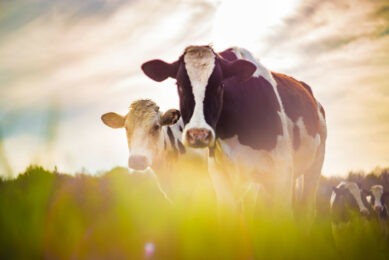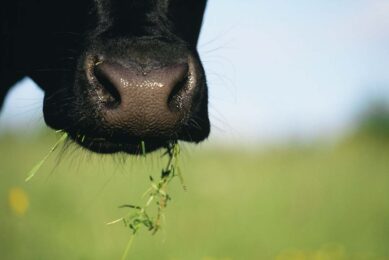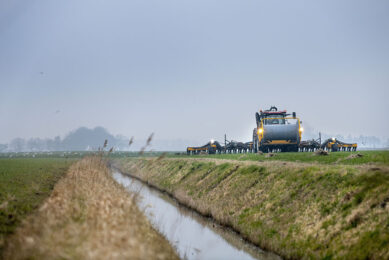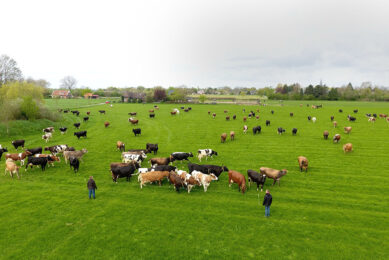Farmer to trial new nitrogen fixing plasma reactor
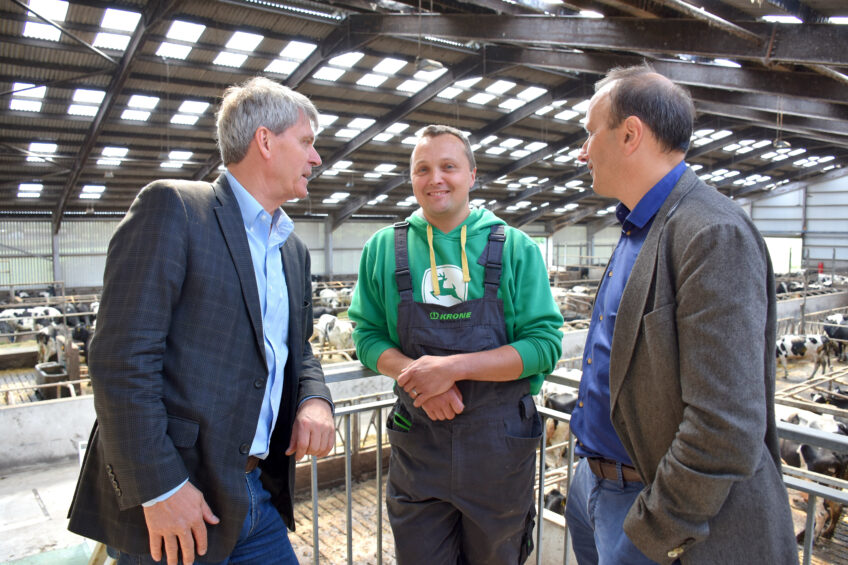
A large dairy farm in Northern Ireland is currently trialling a new system of reducing ammonia emissions while producing its own liquid nitrogen fertiliser at the same time.
This new concept, developed by Norwegian company N2 Agri, involves passing manure or digestate through a plasma reactor to produce the liquid nitrogen fertiliser. This process, the company says, will ultimately save farmers up to 20% of their artificial fertiliser costs and also reduce their ammonia production levels. Although the concept has moved beyond the prototype stage, it is still being tested around the world; one on a pig farm in Denmark and the other on a 650 cow dairy farm near Templepatrick in Northern Ireland.

Saving 20% on artificial nitrogen
The farm is run by Robin Bingham and his son George who installed a biogas plant one year ago which produces electricity and supplies it into the national grid. In total, the farm has 1,200 cows and runs a zero grazing system where the fresh grass is harvested and delivered to the cows daily. The plasma reactor was installed at the farm one month ago on a trial and is already producing liquid nitrogen which has been spread on test plots at the farm. N2 Agri says its goal is to fundamentally improve the global food production by enabling the farmer to produce his or her own fertiliser from manure, air and renewable energy. By installing their system, N2 Agri says farmers could potentially save up to 20% on their artificial nitrogen costs and with these savings should be able to pay back the plasma reactor in around 6 or 7 years.

From waste to high value fertiliser
With expertise gained in the fertiliser industry over many years, the experts at N2 Agri have developed and patented this technology that uses a plasma reactor that fixes nitrogen from the air and adds it to the manure. This causes a reaction with the manure and stops ammonia losses as well as emissions of other greenhouse gasses, and additionally removing bad odour. Besides reduction of ammonia emissions, the system increases the nitrogen content in the manure and transforms it from a waste problem into a high value fertiliser. Henk Aarts, N2 Agri business development director, said: “Our objective is to empower livestock farmers through introduction of a low cost, scalable fertiliser production on the farms. Our ultimate goal is to substitute chemical fertilisers with fertiliser produced locally on the farm from air and renewable energy. And meanwhile we work on a better stable climate and a more sustainable livestock sector. We can also upgrade biogas digestate to a higher value fertiliser with our technology.”

Convincing farmers with pilot studies
Although the company is trialling 2 machines in Europe it has plans to embark on more trials further afield in places like South Africa. N2 Agri is partnering with SBI, an innovative plasma welding company based in Hollarunn, Austria. N2 and SBI are further using the competence of the University of Vienna for analysis of plasma composition and temperatures. Mr Aarts added: “We are not in the phase of selling machines yet, but want to show our plasma reactor and explain the working principles to stakeholders. Our reactor is not fully developed, but we want to test it under farm conditions in an early stage to get experience with different types of manure and biogas digestate and to do field trials on different crops which on the Bingham farm are grass plots.” The key argument to convince farmers to use this plasma reactor is to explain how they are losing so much nitrogen from their livestock and slurry which is later supplemented by artificial fertiliser spread on the ground. In fact, there is 2.13 million tons of ammonia lost on European livestock farms each year which is a huge loss of potential fertiliser.

Making the farm more environmental friendly
One of the founders of N2 Agri is Norwegian Rune Ingels, a chemical engineer who spent almost 30 years working in the fertiliser industry, more recently with Yara, before resigning to embark on his own ideas. Mr Ingels explained how farmers lose nitrogen and are subsequently forced to pay out for expensive artificial fertiliser. He said: “We need above 95% moisture content in the manure to make the system work. Slurry has 50% free ammonia but digestate has around 70% free ammonia. Just over 50% of the total nitrogen available in slurry is lost before it can be spread on the ground. However, using our system we can make more nitrogen available for plants, which are also taken up quicker by the plants increasing their growing rates and yields. There are some tweaks needed to the system the Binghams are using as it is primarily installed to test yields at the moment.”
Potential game changer
Dairy farmer George Bingham said the system interested him as it met his desire to farm in a more environmentally friendly way. “Using this plasma reactor system will help us achieve our goals of farming more environmentally friendly while at the same time, sorting out my ammonia quotas. “I see this as a potential game changer across the world helping farmers get more from their farmyard slurry and saving them money. For me, reducing or even eliminating my chemical fertiliser bill is one of the main benefits of this system. The system has only been installed one month and we have already produced our own liquid nitrogen and spread it on some grass test plots to see if the theories of faster plant growth with higher yields are feasible.”

Reactor size can be changed
It is anticipated that a farm with 150 to 200 cows will need 1 25KW plasma reactor, therefore a 600 cow herd would need 3 units. However, the reactors can be scaled to suit the farm, according to Mr Aarts. “We can change the sizes of the reactor to suit the herd,” he said. “We don’t have exact prices as yet but I can tell you a reactor is cheaper than a milking robot and is the same size as one.”
Join 13,000+ subscribers
Subscribe to our newsletter to stay updated about all the need-to-know content in the dairy sector, two times a week.



